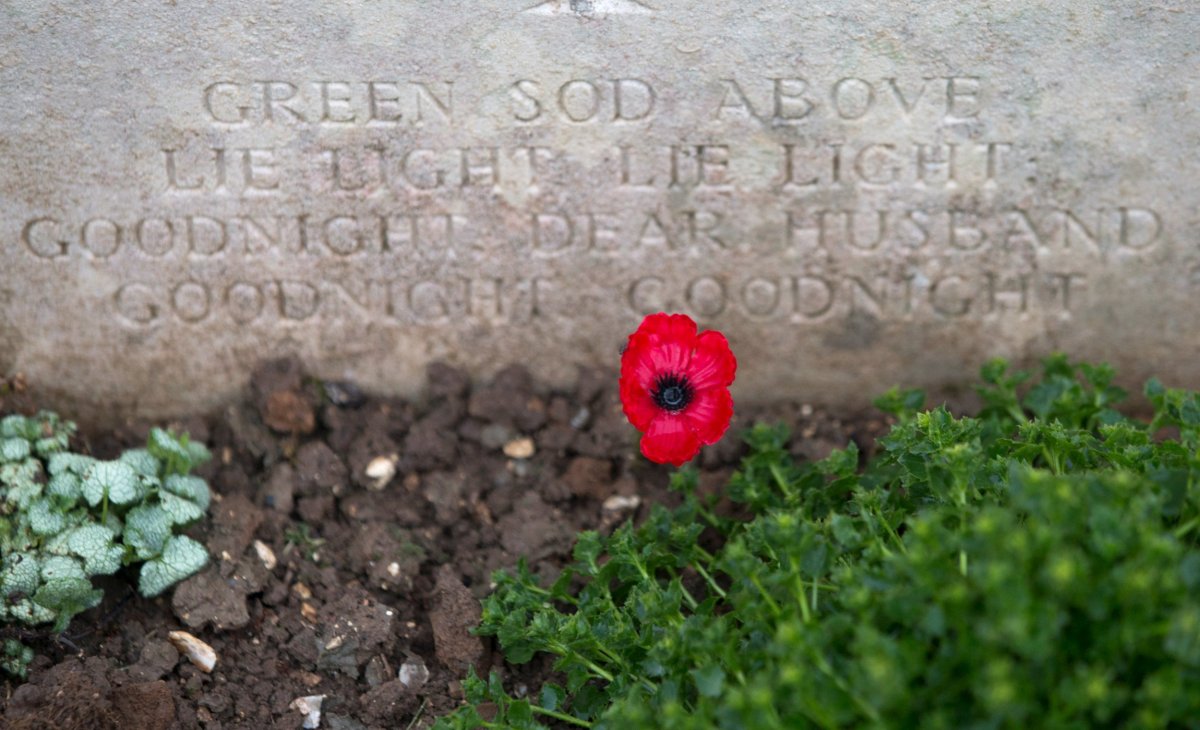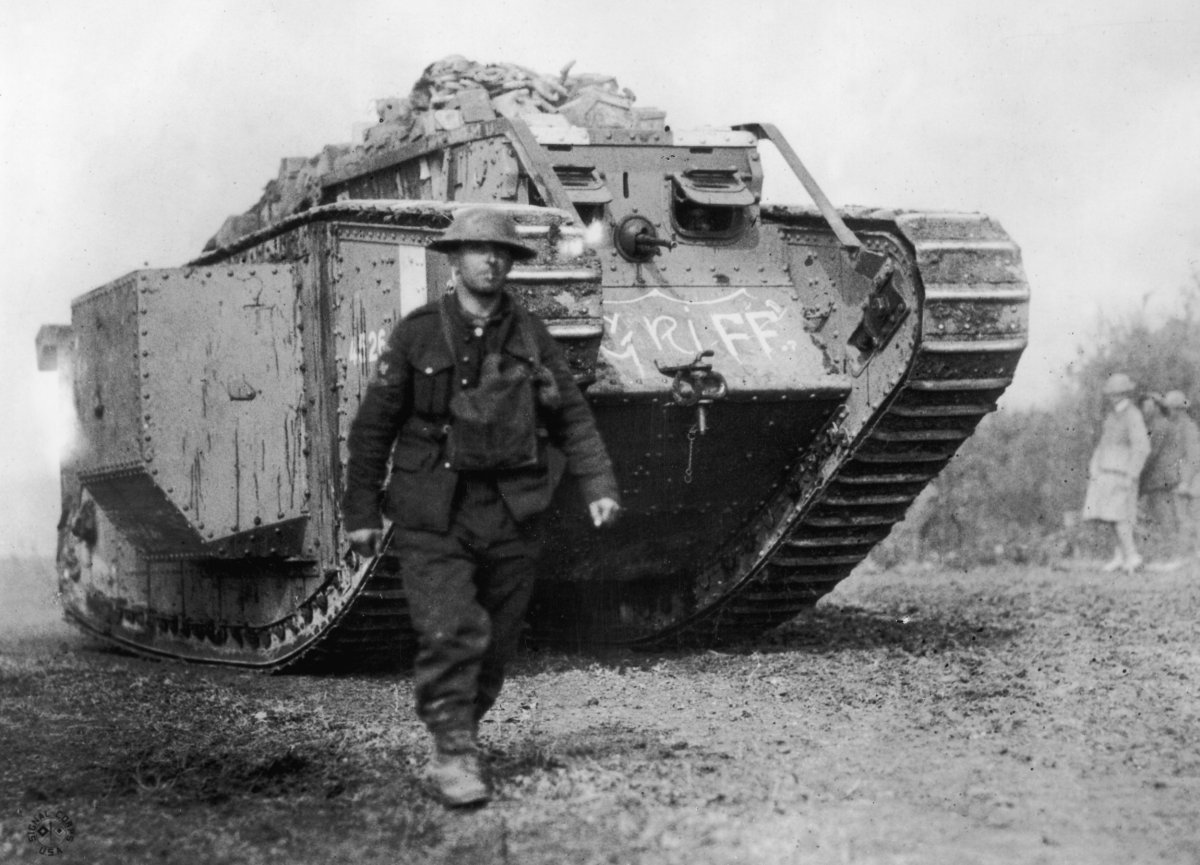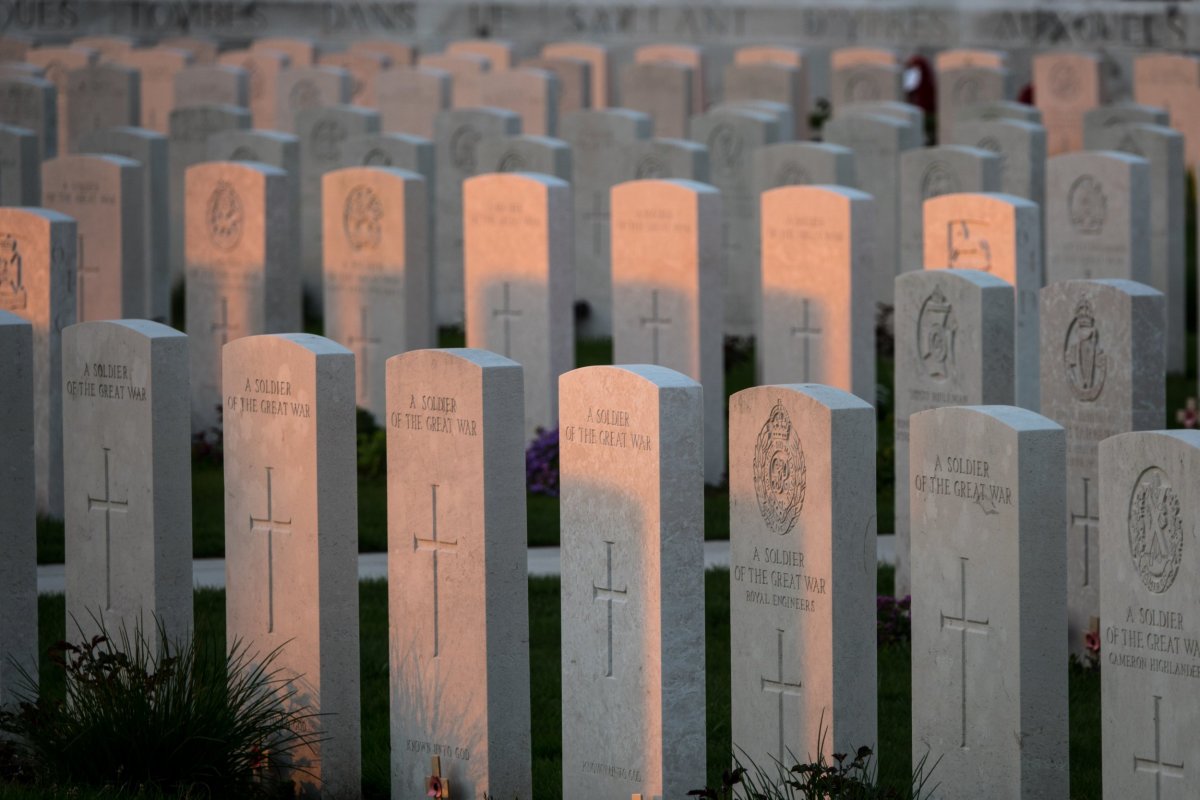Verdun, the Somme, Passchendaele, Ypres, Belleau Wood—dozens of spots in northern France and Belgium have been forever seared into humanity's collective memory by the horror of the first World War.
Relatively run-of-the-mill villages, towns, forests, hills and rivers, brought to the world's attention by the carnage that unfolded there. Where millions of men fought and died over miles and yards, willed on by loyalty to god, king and country.
Today marks the 100th anniversary of the Battle of Amiens. In August 1918, the area around Amiens—a quaint, traditional northern French town—became the staging ground for the offensive that would mark the beginning of the end of the four-year war. A stunning victory for the allies brought an end to trench warfare on the Western Front and set in motion a period of 100 days in which the German Empire's will to fight on would finally collapse.

For the Allied forces—British, Australian, French, Canadian and even a handful of Americans—the battle represented the culmination of years of technological innovation and tactical cooperation. The armies threw 500 tanks, 2,000 aircraft and 2,000 artillery pieces into the fight, and within three days the most advanced units had made it 12 miles behind German lines—a distance unheard of for the allies since the initial battles of 1914.
It was not just the beginning of the end for World War I. Some historians argue that the orchestra of tanks, artillery, aircraft and infantry that overwhelmed the Germans represented the birth of modern, combined-arms warfare. When we think of World War I, the prevailing image is one of mud, blood and trenches. But at Amiens, there was "movement, and most importantly there was quick movement," explained Catherine Long, a public engagement officer at the Imperial War Museum in London.
Many men on both sides would never see the significance of the action. Before the battle was over, 46,000 Allied soldiers had been killed or wounded, as were up to 75,000 Germans, including those taken prisoner.
Long told Newsweek the advance was "really quite extraordinary." Unlike previous offensives, the advancing troops were able to stop and consolidate their positions. "That ultimately is what led to the success, the beginning of the end of the war," Long explained.
The importance of new technology was apparent in the varying fortunes of different units. The British Third Army, with no tank support, had little effect. But to its south, the British Fourth Army and its armored support broke deep into German territory. Tanks had been on the battlefield since 1916, but by 1918 the Allies had learned how to use them.

The Allied soldiers who fought at Amiens in August had survived the German Spring Offensive of March to July. Then, the German army gambled on one last-ditch, high-intensity operation to try and force an end to the war before American men and materials flooded into France. They came close to success, pushing the Allies back a significant distance and threatening to break through the lines towards Paris and the vital English Channel ports.
But the Allies held on. The Germans pushed far, but took atrocious casualties, including among their elite stormtrooper units. With the failure of the offensive, it was time for the Allies to hit back. "Now the shoe was on the other foot," Long said, noting that the morale boost of being on the offensive made a huge difference to the troops.
Amiens was a key strategic location, straddling the railway line running from Paris to the port city of Boulogne. While the Germans held the town, the Allied supply network would be limited. The high ground around Amiens also gave the Germans visibility over the entire locale. To win the war, the Allies had to push them off, Long explained.
The coalition went to painstaking lengths to keep preparations for the assault under wraps. Most battles began with an intense artillery bombardment to soften up enemy defenses, but this time there was none. The British also intensified activity around Ypres to the north as a feint, while commanders referred to the coming battle as a raid rather than an offensive.
The bluff paid off. The Germans were taken largely by surprise and in some areas whole units surrendered en masse. There were reports of German officers captured far behind the lines while still eating their breakfast, such was the speed and penetration of the attackers.

Australian Captain Edwin Francis Trundle wrote to his wife Louise on August 12—the last day of the battle—explaining that "everything has gone excellently and everyone is in high spirits," adding, "The attack completely surprised the Huns." After months of defense and retreat, Allied troops could celebrate a victory, and a stunning one at that.
The German commander General Erich von Ludendorff called the first day of the battle "the black day of the German army," a damning indictment given the previous four years of horrendous bloodshed. German officer and author Ernst Jünger, highly decorated for his bravery during the war, wrote that after Amiens, "Every man knew that victory could no longer be ours."
"This was the point of realization that the war could no longer be won," Long said. "When you have someone like Jünger reflecting on this…for him to even internally recognise that situation, must have led to some really difficult internal reflections."
VIP guests will descend on Amiens's 13th-century cathedral today to mark the anniversary of the battle. Prince William and British Prime Minister Theresa May will be there alongside 3,000 members of the public, including relatives of those who fought, and died, in the fields, towns and villages nearby. Though it hastened the end of the conflict, the war graves that blanket the Picardy region pay testament to the cost—another tragedy among four years of unimaginable, and arguably avoidable, human slaughter.
Uncommon Knowledge
Newsweek is committed to challenging conventional wisdom and finding connections in the search for common ground.
Newsweek is committed to challenging conventional wisdom and finding connections in the search for common ground.
About the writer
David Brennan is Newsweek's Diplomatic Correspondent covering world politics and conflicts from London with a focus on NATO, the European ... Read more
To read how Newsweek uses AI as a newsroom tool, Click here.








